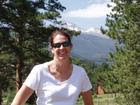These two chapters cover experimental research (10) and ethnographic research (11), which, of course, are at opposite ends of the research spectrum from one another. It’s an interesting contrast and, after having noticed this, I realized that there is a similar contrast between the first two chapters of this part of the book (case studies and surveys). The contrast is greater between experimental and ethnographic research and it appears as if she is preparing us for this great contrast by allowing us to compare and contrast case studies and survey research first; sort of easing the reader toward both ends of the spectrum.
True to her word (in the introduction), she discusses the unique aspects of conducting ethnographic research in a virtual community. Not differentiating it from ethnographic research in other communities but providing insight into the particular issues unique to a virtual environment. What interested me most here was a set of qualities she uses (borrowed) to define a community in a virtual environment. First because she doesn’t say (and I wondered) whether there are also accepted characteristics that define a ‘community’ in a non-virtual environment (other than the obvious physicals ones). Are they so obvious that ‘anyone’ will recognize them? I think it would be interesting to go back and look at that in depth.
And second, in discussing another problem posed by virtual communities, that of observing the personal identities of community members because they are more easily hidden in a virtual community. She says, “Dissembodied communication makes it very difficult for a researcher to engage in participant observation” (p.120). I have to disagree with that a bit. I think that the characteristics of an individual that a researcher can observer are different in a virtual community vs. a physical one but they certainly still exist beyond the verbal/textual. For example, one might as easily observe the communication behaviors exhibited by members of a virtual community as one could in a physical community. The means of communication may differ (speech vs. text) but the act of communicating is happening.

Subscribe to:
Post Comments (Atom)
Live chat
About Me

- SWS
- I am... a wife a daughter a sister/sister-in-law an aunt a reader a librarian a doctor a quilter a niece a grandmother ;-) a cat owner 6 feet 1 inches tall a yoga enthusiast a cook
Blog Archive
-
▼
2007
(63)
-
▼
June
(26)
- ALA 2007 – Eye to I: Visual Literacy Meets Informa...
- ALA 2007 - The Future of Information Retrieval
- ALA 2007 - Utilizing learning theory in online env...
- ALA 2007 - LRRT Research Forum: Information Seekin...
- ALA 2007 - Library Research Round Table Research F...
- ALA 2007 - Library Research Round Table Research F...
- Informing the future of MARC: An empirical approach
- ‘Research Methods in Information’ chapters 9 and 10
- ‘Research Methods in Information’ chapters 7 & 8
- "Research Methods in Information" chapters 5 & 6
- Need a laugh?
- 'Research Methods in Information' chapters 3 & 4
- NASIG 2007: final thoughts
- NASIG 2007: Education trifecta: win attention, pla...
- NASIG 2007: How does digitization affect scholarship?
- NASIG 2007: Hurry up please. It’s time – State of ...
- ALA 2007 schedule
- "Research Methods in Information", chapter 2
- "Research Methods in Information" chapter 1
- "Research Methods in Information"
- Too good not to share
- NASIG 2007: Betting a strong hand in the game of e...
- NASIG 2007: Alternatives to licensing of e-resources
- NASIG 2007: Electronic resources workflow management
- NASIG 2007: "What's the different about the social...
- NASIG 2007 conference: opening session
-
▼
June
(26)
No comments:
Post a Comment